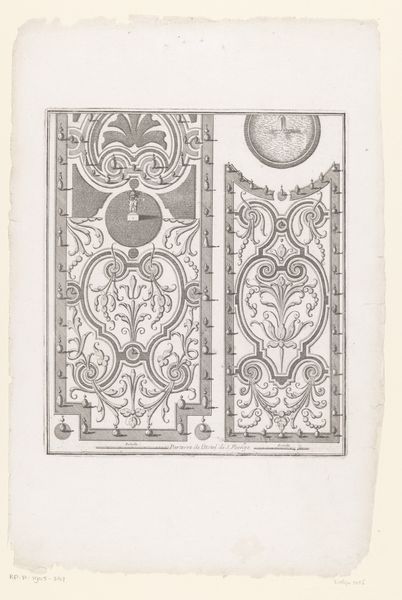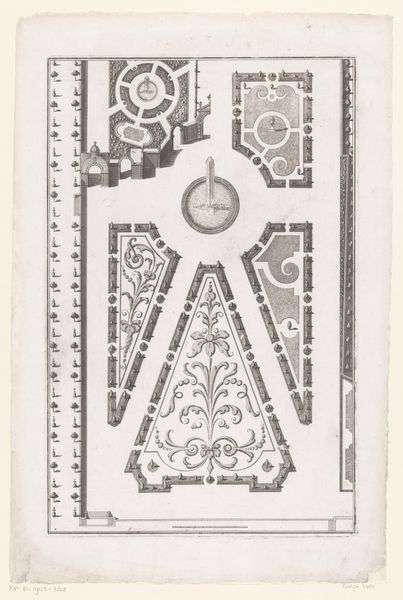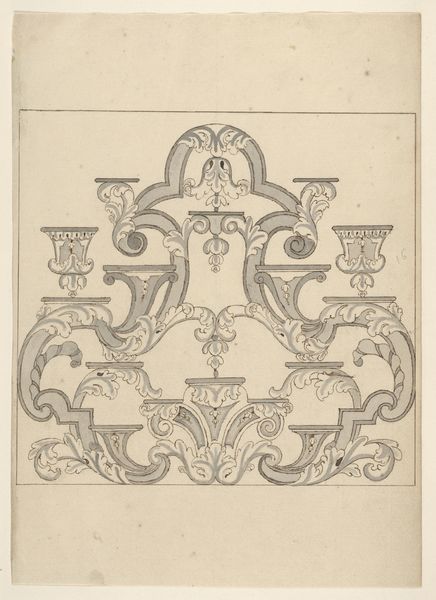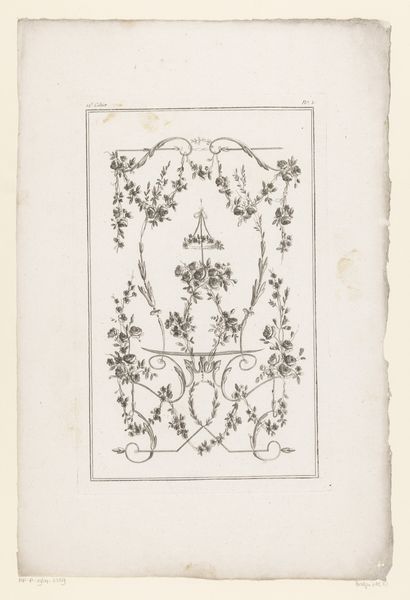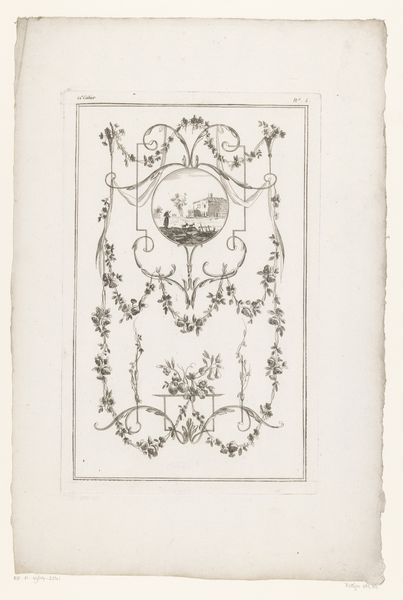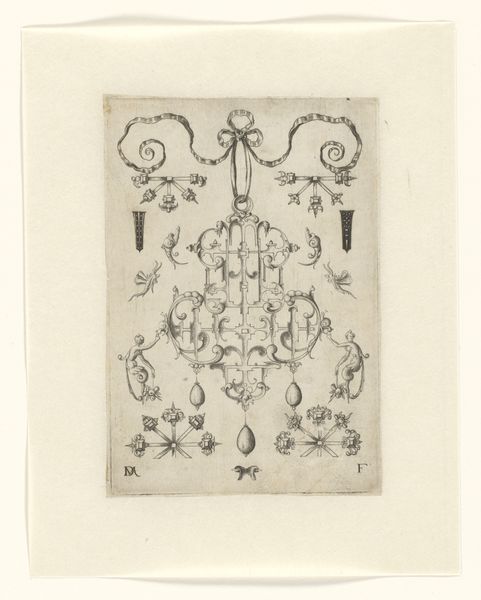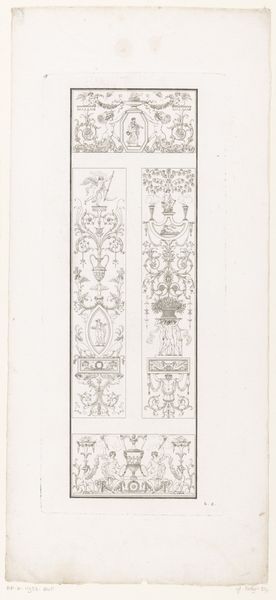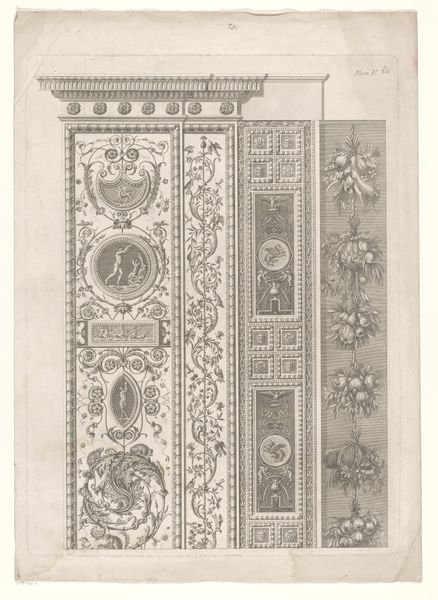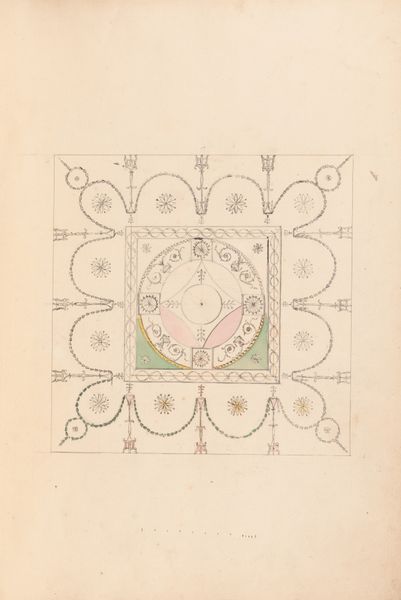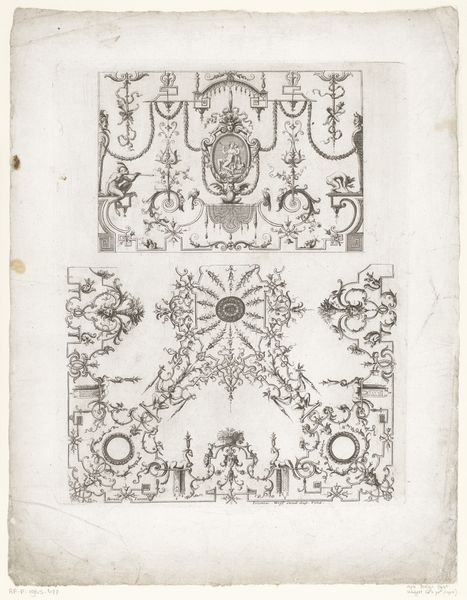
drawing, print, paper, ink, engraving, architecture
#
drawing
#
baroque
#
ink paper printed
# print
#
old engraving style
#
landscape
#
paper
#
ink
#
geometric
#
pen work
#
engraving
#
architecture
Dimensions: height 240 mm, width 195 mm
Copyright: Rijks Museum: Open Domain
Curator: At first glance, this appears to be an incredibly precise rendering, almost sterile in its clarity. Editor: That’s a perfect starting point. What we are observing here is a Baroque garden plan, tentatively dated to between 1650 and 1700, found within the Rijksmuseum collection. The anonymous artist employed ink and engraving techniques to meticulously draft this design onto paper. Curator: The symbolism just leaps out at me, all that ornamentation... the little finials denoting possible trees, a large fountain dominating the upper register of the plan... The repetition gives it an almost meditative quality. Is that common? Editor: Very much so. Formal gardens during the Baroque era were intended to reflect and reinforce ideas about the cosmic order of things. You see that strong geometry combined with classically-inspired ornamentation throughout these plans, mirroring royal ambitions to control both the natural world, and their own dominion. Curator: The way space is organized reminds me of stage design. Like a theater for power. Those perfect lines are hardly natural, are they? It's about man's domination of nature. Editor: Absolutely. There's a deep current of human intention flowing through it all. Notice the symmetry, that meticulous balance? Gardens became tools to demonstrate wealth, intellectual prowess, and sociopolitical control. A carefully calibrated performance for the elite, where nature submits to reason, reflecting humanity’s ordered ideals. The gardens almost served as a form of propaganda in physical space. Curator: What a powerful manifestation of status. All those flowers and flowing water – they become symbols of power instead of natural beauty. Almost makes you question who and what those gorgeous spaces were actually intended to serve. Editor: It truly gives pause, doesn't it? Delving into art of this type peels back layers to expose cultural aspirations, anxieties and assertions of authority from centuries gone by. Curator: For me, seeing such calculated grandeur offers perspective to what those powerful people sought to express about themselves through controlling elements. Editor: And for me, deciphering what lingers beneath those layers of ornate geometry enriches my experience of human creativity throughout history.
Comments
No comments
Be the first to comment and join the conversation on the ultimate creative platform.
